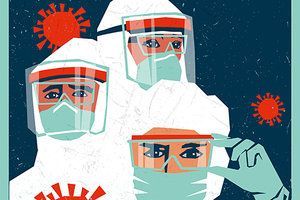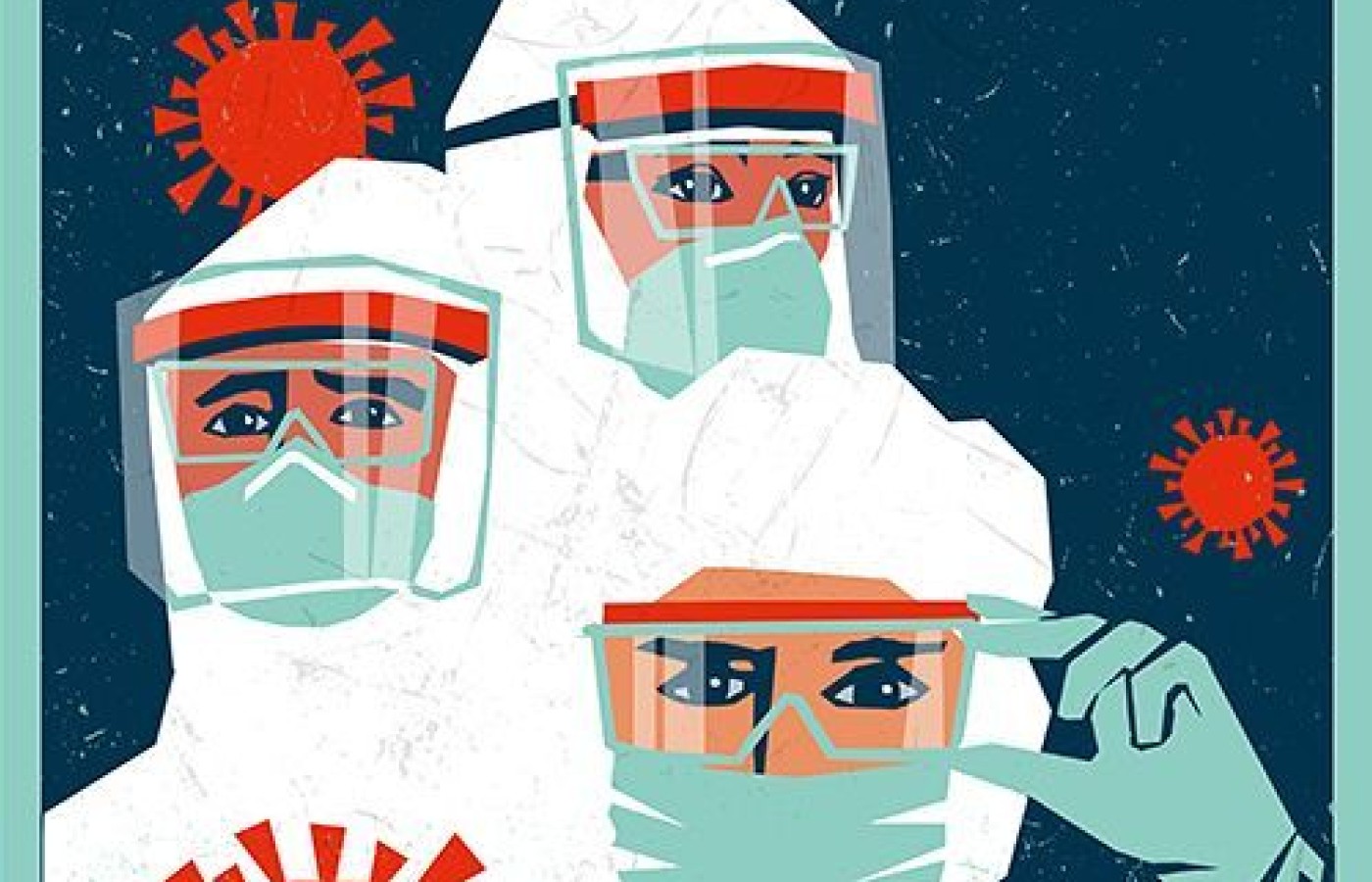You became a chiropractor to serve people, not an insurance company. You deserve to run a business that aligns with your values, supports your family and lights you up. Cash-based care isn’t just a pricing model – it’s a philosophy rooted in freedom, trust and respect for your patients and for yourself. Here's why - and how - to do it.
COVID-19: Lessons Learned From Past Pandemics (Pt. 2)
Editor's Note: Part 1 of this digital exclusive appeared in the July issue and discussed the history of past pandemics and some of the missteps that may have made them worse.
Given the fact that COVID-19 will likely be with us for some time, it's important to understand what can be done to protect those at risk while the pandemic runs its eventual course.
Drugs and the Vaccine: More Trouble Than They're Worth?
Recently, the World Health Organization launched an international trial called Solidarity to test for promising therapies. These drugs include the antimalarial chloroquine and hydroxychloroquine; the antiviral remdesivir; the antivirals lopinavir and ritonavir (used for the treatment of HIV); and the HIV antivirals plus the anti-inflammatory protein beta interferon.
Unfortunately, most recent research on hydroxychloroquine is that the risks outweigh the benefits. Serious side effects including cardiac arrhythmias made researchers question the efficacy of this intervention.17 Remdesivir looks more promising, but it's expensive and must be given intravenously in a hospital early in the course of the disease.

Although effective at preventing AIDS, some experts feel the HIV antivirals will be ineffective for managing COVID-19. Because enzymes function by recognizing shapes of antigens, one researcher states the probability that an enzyme that works for HIV will also work for COVID-19 is equal to the probability the key that starts your car will also start your neighbor's car: about one in a million.18
Nonetheless, some scientists feel that the HIV antivirals might be more effective when used in combination with interferon beta, a medication used in multiple sclerosis to suppress immune response. When given early in the treatment of mice infected with SARS-1 and MERS, this combination of drugs rapidly halted infections. Unfortunately, when given later in the disease, the mice died.
Suppressing immune function in an individual dealing with COVID-19 is a difficult balancing act, as it can prevent the body's deadly overreaction to the coronavirus, but allow a secondary invasion, which may be lethal.
An important concern regarding the management of pandemics is that almost all medical interventions have significant side effects, are expensive, and in the case of COVID-19, phase 3 testing for some of these medications won't be completed for some time. This is especially true for a potential vaccine for COVID-19, which has a completion date sometime in 2021, which could be about the same time the pandemic is ending.
A Better Option: Enhancing Immune Function
In the meantime, a more logical and cost-effective approach to managing the COVID-19 pandemic is to enhance immune function through diet and exercise. This approach is more effective than you might think.
Diet and Immune Function
In a 16-week study of 83 healthy adults aged 65 to 85 who were assigned to either continue their normal diet, or consume five or more portions of fruits and vegetables per day, the extra consumption of fruits and vegetables produced significant increases in antibody response to a Pneumovax II vaccination.19 Importantly, fruits are an excellent source of vitamin C, which has been shown to reduce C-reactive protein levels by as much as 25 percent.20
While statin drugs have been praised as being beneficial in the management of COVID-19, these drugs have significant side effects, including myopathies and cognitive impairments. In contrast, 1,000 mg of vitamin C is safe and effective, and is an inexpensive way to significantly reduce C-reactive protein levels.
Another simple nutritional recommendation is to get adequate amounts of vitamin D. A 2017 meta-analysis of 10,933 participants confirmed that vitamin D supplementation protected against acute respiratory tract infection by enhancing antimicrobial peptides in response to viral and bacterial stimuli.21
Because people in assisted living have limited access to sunlight, an important natural source of vitamin D, they are extremely susceptible to vitamin D deficiency. One study from Switzerland found that 76 percent of individuals admitted to hospitals from nursing homes suffered from severe vitamin D deficiency.22 While this study looked specifically at the strong connection between low vitamin D levels and falls in the elderly, it could explain why more than 50 percent of all deaths with COVID-19 occur in senior centers.
Exercise and Immune Function
In my opinion, the single best way to enhance immune function is with exercise. In 2012, researchers assigned 154 older adults to either an eight-week exercise program or non-exercising control group prior to the beginning of cold and flu season. At the end of the study, the exercising group had 35 percent fewer viral infections, and had nearly 50 percent fewer lost days from work.23 This is consistent with a six-year analysis of data from 19 U.S. states that concluded that every 5 percent increase in physical activity produces a 7 percent reduction in influenza-related hospitalizations.19
In addition to improving immune function, people who engage in a minimum of 2.5 hours of moderate physical activity (e.g., brisk walking) per week have a 22 percent reduced risk of developing breast-cancer, 43 percent decreased risk of coronary heart disease, 85 percent decrease in the risk of type II diabetes, and an 85 percent decrease in the risk of developing colon cancer.24
A simple 10-week program of resistance exercises produced a 33 percent reduction in C-reactive protein,25 which when elevated, is an important predictor of poor outcome following COVID-19 infection.
Other risk factors such as obesity and hyperglycemia are also favorably modified with exercise. A 2020 paper published in Medicine and Science in Sports and Exercise26 showed that light aerobic exercise, performed 50 minutes per day, six days per week, produced appreciable reductions in body mass index and improved insulin sensitivity.
Exercise is especially important for people over 60, as they are at higher risk for COVID-19 infection. A 2019 study of more than 16,000 women with an average age of 72 showed significant improvements in overall health with as few as 4,400 steps per day, which is a little over 2 miles.27 Health benefits during the 4.3 years of the study continued to increase until the women hit 7,500 steps per day, after which there were no significant improvements. Knowing this upper limit is important, since excessive exercise (e.g., marathon training) can actually suppress immune function.
If arthritis limits your ability to walk, home exercises with light resistance can also produce significant improvements in health. In 2018, researchers from Japan had 88 men and women ages 70 years and older participate in a weight-training program in which they performed two sets of 10-14 repetitions daily for 12 weeks.28 The subjects used body weight alone and performed the movements very slowly (four seconds up and four seconds down). At the end of the 12-week training program, in addition to significant increases in muscle mass, participants also had decreased hip and waist circumference and reduced abdominal fat.
This study is remarkable because the participants had no prior experience with weight training, the exercises were performed at home (taking less than 15 minutes each day), and by the end of the study, only two of the 88 people involved had dropped out.
Modifying COVID-19 Risk: Promote a Natural Approach
While the media has done an excellent job frightening people with comorbidities, they've neglected to mention that these comorbidities are modifiable (excluding old age), and diet and exercise can make a huge difference in boosting not just your immune function, but also your overall health.
While the pharmaceutical industry is spending billions of dollars on ways to improve immune function with medication, you can spend the next 12 to 18 weeks improving your immune function by increasing your step count from 2,000 steps to 7,500 steps per day and swapping out refined sugars for fruits and vegetables.
If you're afraid of being injured while initiating an exercise program, consider hiring a local trainer, as most of them have been out of work for the past several months and would appreciate the business. In just a few months, 45 minutes of light exercise each day can markedly improve immune function, lower blood pressure, reduce body fat, and stabilize blood glucose.
In addition to improving metabolic markers for health, aerobic exercise has also been proven to be an effective antidepressant, which given what the past few months have been like, is a welcome addition to the numerous benefits associated with regular exercise.
References
17. Mehevas M, Tran V, Roumier M, et al. Clinical efficacy of hydroxychloroquine in patients with COVID-19 pneumonia who require oxygen: observational comparative study using routine care data. BMJ, 2020;369:m1844.
18. Lewis T. "Here's What We Know About the Most Outer Drugs Tested for COVID-19". Scientific American, June-July 2020:14.
19. Charland K, Buckeridge D, Hoen A, et al. Relationship between community prevalence of obesity and associated behavioral factors and community rates of influenza-related hospitalizations in the United States. Influenza and Other Respir Vir.2013;7:718–728.
20. Block G, Jensen C, Dalvi T, et al. Vitamin C treatment reduces elevated C-reactive protein. Free Radic Biol Med, 2009 Jan 1;46:70-77.
21. Martineau A, Jolliffe D, Hooper R, et al. Vitamin D supplementation to prevent acute respiratory tract infections: systematic review and meta-analysis of individual participant data. BMJ, 2017;356:i6583.
22. Bischoff-Ferrari H, Can U, Staehelin H, et al. Severe vitamin D deficiency in Swiss hip fracture patients. Bone, 2008;42:597-602.
23. Barrett B, Hayney M, Muller D, et al. Meditation or exercise for preventing acute respiratory infection: a randomized controlled trial. Ann Family Med, 2012;10:337-346.
24. Booth F, Chakravarthy M, Spangenburg. Exercise and gene expression: physiological regulation of the human genome through physical activity. J Physiol, 2002;543:399-411.
25. Donges C, Duffiled R, Drinkwater E. Effects of resistance or aerobic exercise training on interleukin-6, C-reactive protein, and body composition. Med Sci Sports Exerc, 2010;42:304-313.
26. Flack K, Hays H, Moreland J, et al. Exercise for weight loss: further evaluating energy consumption with exercise. Med Sci Sports Exerc, 2020: e-pub ahead of print.
27. Lee I, Shirom E, Kamada M, et al. Association of step volume and intensity with all-cause mortality in older women. JAMA Internal Med, 2019 May 29;179(8):1105-111.
28. Tsuzuku S, et al. Slow movement resistance training using body weight improves muscle mass in the elderly: a randomized controlled trial. Scand J Med Sci Sports, 2018;28:1339-44.



